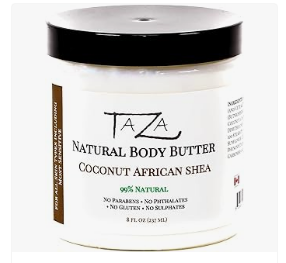Have you ever wondered where the rich, creamy ingredient in your favorite skincare products comes from? I’m talking about cocoa butter, and it’s not just popping out of nowhere. This moisturizing marvel begins its life as seeds within the pods of the cacao tree, primarily found in the lush tropics.

Natural Coconut Body Butter
Now, what exactly happens between those cacao seeds and the cocoa butter in your products? It all starts with the seeds being harvested, fermented, and dried, which provides the base for what will become two beloved ingredients: chocolate and cocoa butter. The next step is pressing the fat out of the cacao beans at high pressure, yielding the golden butter, while the remaining components forge ahead to become cocoa powder.
Cocoa butter is a powerhouse of nutrition for your skin. It’s brimming with fatty acids like palmitic, stearic, and oleic acids, all of which are superstars for maintaining skin’s moisture and elasticity. And that’s just scratching the surface! The butter also contains vitamins and antioxidants that pamper the skin, guiding it towards naturally glowing health. You can imagine your skin saying, ‘Thank you!’ every time you apply it.

I’m sure you’re with me when I say that where our products come from matters. Sustainability isn’t just a buzzword; it shapes the futures of local farming communities and the environment. So make sure you’re choosing cocoa butter that’s sourced ethically. That way, we get to enjoy the benefits without contributing to unwelcome practices like deforestation or unfair labor conditions.
With a better understanding of cocoa butter’s origins and its nourishing substance, let’s explore how this ingredient works tirelessly to keep your skin at the top of its game. In the next section, we’ll delve deep into the skin benefits of cocoa butter and discover how it’s making waves in various skincare products.
Embracing Natural Care: The Multifold Skin Benefits of Cocoa Butter
So you’ve learned about where cocoa butter comes from and its journey from the cocoa bean to your skincare routine. Now, let’s talk about what it can do for your skin. First up, we’re going to address its hydrating superpowers. Dry, flaky skin is no match for cocoa butter’s rich, fatty acid content, helping your skin retain moisture and maintain its elasticity.
If you’re looking to fade scars and blemishes, cocoa butter could be your new go-to. Some studies suggest that the regular application of cocoa butter might improve the appearance of scars, although more research is needed to understand the full extent of its benefits. But that’s not all. Cocoa butter is also an antioxidant stronghold, providing your skin with a line of defense against the environmental stressors that can lead to premature aging.
Considering the benefits, it’s no wonder you’ll find cocoa butter in a multitude of skincare products. Whether it’s in a luxurious body lotion, a hydrating lip balm, or a creamy hand cream, cocoa butter is everywhere. Its capacity to smooth, soften, and nourish your skin has made it a staple ingredient for those looking to enhance the health and appearance of their skin without resorting to harsh chemicals.
How can you start reaping these benefits? Well, integrating cocoa butter into your skincare regimen is downright simple. Choose products that list cocoa butter as one of the first few ingredients to ensure you’re getting an effective amount. Remember, everyone’s skin is unique, so monitor how your skin responds. Don’t worry too much about getting it perfect on the first try; you can always adjust your approach down the road.
To sum up, cocoa butter is a natural, powerful ingredient that might be just what your skincare routine is missing. By utilizing a product that includes this hydrating, healing, and protective ingredient, you could see enhancements in the suppleness, clarity, and overall resilience of your skin. Choose something that resonates with you, and remember to give your skin the care it deserves. After all, healthy skin is happy skin!
Follow this link to Cocoa Butter and Soap
Here is some more information on the benefits of Cocoa Butter
#handmadesoap #naturalsoap #makingsoapnaturally #soapmaking #soapmaking #soaps #artisansoap #bathandbody #cpsoap #coldprocesssoap #etsy #soapbase #soapcrafter #soapmaker #soaping #soapcrafting #soaphandmade #soap #giftidea #christmas #barsoap #handmadesoap #natural #organic #skincare #coldprocess #bodybutter #cocoabutter
© 2023 – 2024, admin. All rights reserved.
Hi there,
I just read your article on the benefits of cocoa butter for the skin, and I must say, it’s quite enlightening! Your detailed explanation of its moisturizing properties, rich fatty acid content, and benefits for skin hydration and elasticity is very informative. I’m particularly interested in the part about cocoa butter’s potential in reducing scars and blemishes. However, I’m curious about how cocoa butter performs in different skin types, especially sensitive skin. Is it suitable for all skin types, or are there any precautions to consider?
Thank you for your work and sharing this helpful information!
Warm regards,
Makhsud
I have found that cocoa butter works well with all skin types, but if a person has allergies they should do a skin test for sure. I am allergic to cocoa butter and can use it in soap and lotions, but not in lip balm. So it really does depend on the application and the person.